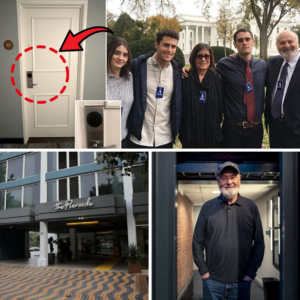Imagine this: You’re on a crowded light rail train, the rhythmic hum of the tracks lulling you into a false sense of security. Your phone buzzes in your hand—a quick scroll through social media, a text from a friend, or maybe just one more level on that addictive game. The world around you fades into the background. But what if, in that moment of distraction, danger is lurking just inches away? What if your next notification could be your last breath?
This isn’t a hypothetical thriller plot. It’s the harrowing reality that unfolded for 23-year-old Iryna Zarutska on a seemingly ordinary evening in Charlotte, North Carolina. Her story isn’t just a tragedy; it’s a chilling warning siren for a generation glued to their screens. As we dive into the details of her untimely death, you’ll uncover the hidden dangers of public transportation in our hyper-connected world—and why putting down your phone might just save your life.
Iryna Zarutska was the epitome of youthful ambition and resilience. Born in Ukraine, she fled the horrors of war in her homeland, seeking refuge and a fresh start in the United States. At just 23, she had already carved out a promising life in Charlotte. Friends described her as vibrant, kind-hearted, and full of dreams. She worked diligently, perhaps in a local job that allowed her to support herself while adapting to a new culture. Like many young immigrants, Iryna embraced technology as a lifeline—staying connected to family back home, navigating her new city, and finding moments of joy in the digital realm. Her phone wasn’t just a device; it was a portal to the world she left behind and the one she was building.
On August 22, 2025, Iryna boarded the Lynx Blue Line light rail at the East/West Boulevard station, a routine commute that millions take every day without a second thought. Surveillance footage later revealed a scene that could have been any urban transit ride: passengers scattered in seats, some chatting, others lost in their own worlds. Iryna settled into a seat, her head bowed over her phone, oblivious to the man sitting directly behind her. He was Decarlos Brown Jr., a 30-year-old with no apparent connection to her. What happened next was swift, brutal, and utterly senseless.
In a matter of seconds, Brown stood up, knife in hand, and launched a vicious attack from behind. Iryna, engrossed in her screen, had no time to react. The stabs came fast—multiple wounds that proved fatal. Nearby passengers, many also distracted by their devices, didn’t intervene until it was too late. The train continued rolling as chaos erupted. Iryna slumped forward, her life slipping away amid the indifferent glow of smartphone screens. Paramedics arrived, but she was pronounced dead at the scene. The motive? Investigators found none—it was an unprovoked act of violence that shattered the illusion of safety on public transport.
The aftermath sent shockwaves through Charlotte and beyond. Brown was quickly apprehended and now faces federal charges, including committing an act causing death on a mass transportation system. The case drew national attention, with political figures weighing in on broader issues of crime and transit security. But beneath the headlines lies a deeper, more insidious problem: the role of distraction in turning everyday rides into potential death traps. Iryna’s death wasn’t just about one deranged individual; it highlighted how our obsession with phones erodes our awareness, making us easy targets in an unpredictable world.
Think about it—how often do you zone out on your phone during a bus ride, subway commute, or train journey? You’re not alone. Studies show that over 70% of young adults admit to using their phones extensively while on public transit. But this habit comes with a steep price. Distraction reduces situational awareness, that innate ability to scan your surroundings for threats. In Iryna’s case, her focus on the screen meant she didn’t notice Brown’s suspicious behavior or position himself for the attack. Experts in public safety argue that this “tunnel vision” effect is akin to walking blindfolded through a minefield.
The statistics paint a grim picture. While much data focuses on distracted driving—where cell phone use contributes to over 3,000 deaths annually in the U.S.—the parallels to public transit are striking. Distracted walking, often involving phones, leads to thousands of injuries each year. In one analysis, pedestrians using headphones or staring at screens were involved in over 100 fatal or serious incidents in just six years. On public transport, the risks multiply. Crowded spaces, unpredictable passengers, and the false sense of security from being in a “public” area create a perfect storm. Reports indicate that assaults on transit systems have risen by 20% in major cities over the past decade, with many victims caught off guard because they were engrossed in their devices.
Consider similar heart-wrenching stories that echo Iryna’s fate. In New York City, a young woman was pushed onto subway tracks while texting, miraculously surviving but forever changed. In London, a commuter absorbed in a video call was mugged on a bus, the thief snatching her phone right from her hands without resistance. In San Francisco, a distracted rider fell onto the tracks after tripping while scrolling, narrowly escaping an oncoming train. These aren’t isolated events; they’re part of a growing epidemic. A survey by transit authorities revealed that 40% of riders report feeling unsafe, yet the same percentage admits to ignoring their surroundings due to phone use. The irony is palpable: the very tool meant to connect us is isolating us from real-world dangers.
Why are young people particularly vulnerable? Generation Z and millennials, raised in the digital age, treat phones as extensions of themselves. Social media algorithms are designed to hook us, releasing dopamine hits with every like or notification. On public transit, where boredom sets in quickly, it’s tempting to dive into that endless scroll. But this addiction has consequences. Psychologists warn of “attentional blindness,” where focusing on one task—like reading a text—makes you oblivious to everything else. In a confined space like a train car, this can mean missing warning signs: a passenger acting erratically, someone invading your personal space, or even an emergency announcement.
Moreover, public transportation isn’t the sanitized bubble we imagine. In the U.S., violent crimes on transit systems spiked during and after the pandemic, with stabbings, shootings, and assaults becoming more common. Cities like Charlotte have increased security patrols and installed more cameras, but technology alone can’t compensate for human vigilance. Iryna’s case prompted immediate action: enhanced lighting at stations, more officers on trains, and public awareness campaigns. Yet, the onus falls on individuals to reclaim their awareness.
So, how can we turn this tragedy into a catalyst for change? It starts with simple, actionable steps that every young rider can adopt. First, practice “phone-free zones” during commutes. Designate transit time as a moment for mindfulness—observe your surroundings, listen to ambient sounds, or even strike up a conversation with a fellow passenger. If you must use your phone, do so sparingly and keep one earbud out if listening to music. Apps like “Moment” or “Forest” can help track and limit screen time, turning it into a game rather than a chore.
Second, educate yourself on self-defense basics tailored to transit. Organizations like the National Safety Council offer tips: Sit near the driver or conductor if possible, avoid isolated cars, and trust your instincts—if something feels off, move. Carry a personal alarm or pepper spray where legal, and learn to project confidence through body language. Groups and apps for ride-sharing safety can extend to public options, like reporting suspicious activity via transit apps.
Third, advocate for systemic improvements. Push for better funding for transit security, including AI-powered cameras that detect threats in real-time. Community programs in schools and universities can teach digital hygiene alongside physical safety, emphasizing that scrolling isn’t worth the risk. Iryna’s story has already sparked online movements, with hashtags like #EyesUpTransit gaining traction among youth, sharing tips and personal anecdotes to build a culture of caution.
But let’s not forget the human element. Iryna wasn’t just a statistic; she was a daughter, a friend, a dreamer cut down in her prime. Her family, still grappling with the loss, has spoken of her infectious smile and unwavering spirit. In interviews, they’ve urged others to honor her memory by living more present lives. “She came here for a better future,” one relative said, “but a moment of distraction stole it away.” This sentiment resonates deeply in a world where we’re more connected than ever, yet profoundly alone.
As we reflect on Iryna Zarutska’s death, it’s impossible not to feel a chill. Could it happen to you? The next time you board a bus or train, will you choose the glow of your screen or the clarity of awareness? Her story isn’t meant to instill fear but to ignite action. In an era where phones dominate our attention, reclaiming our senses could be the ultimate act of rebellion—and survival.
The tracks keep humming, the crowds keep moving, but the question lingers: When will we look up? Iryna’s legacy demands we do it now, before another life is lost to the shadows of distraction.




